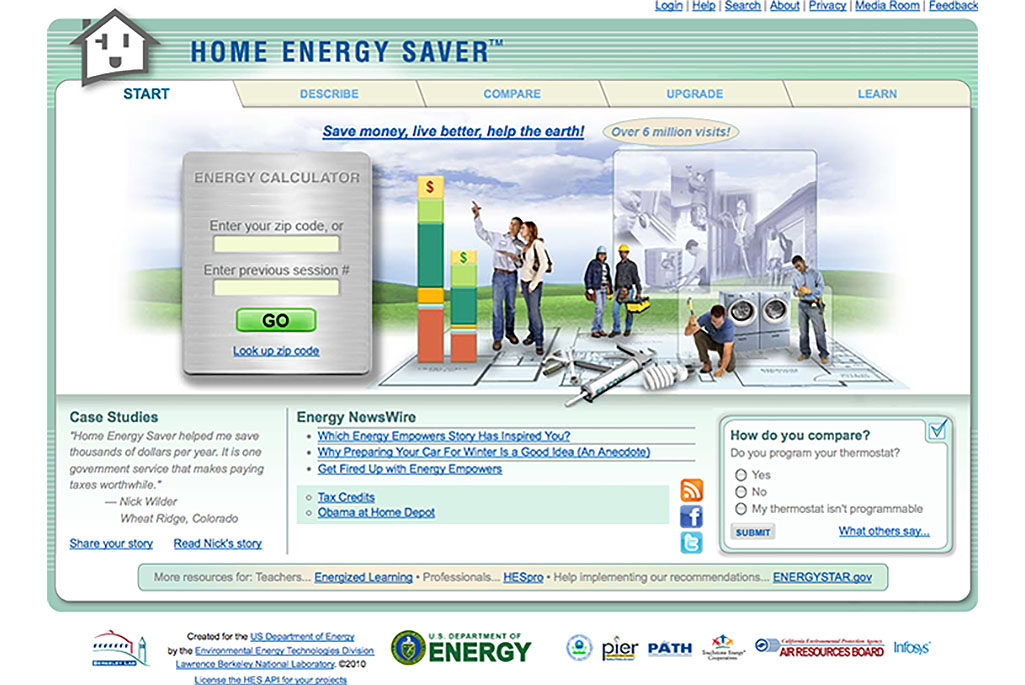When homeowners make upgrades that reduce energy use, they not only save money in energy costs, but they reduce the need to generate power, and its associated air emissions.
Home Energy Saver™, funded by DOE’s Office of Energy Efficiency and Renewable Energy and developed at Lawrence Berkeley National Laboratory, is a free web tool that identifies a range of energy-saving upgrades specific to construction type and geographic location. Users input information about their homes and receive energy use estimates and suggested improvements, such as adding insulation, replacing windows, or upgrading HVAC equipment, home appliances and lighting. Homeowners can get a quick evaluation or more detailed, customized information for a major renovation.
The online tool offers an easy-to-use graphical interface for an incredibly powerful energy simulation program developed at LBNL. Home Energy Saver customizes energy use reports for approximately 300 unique climates in the US and 185 different variables related to home construction, equipment, appliances and uses.
The website has welcomed over six million unique visitors making over 125 million hits. About one-third of HES users report making energy-saving improvements to their homes based on the recommendations made. The technology, a 2010 R&D100 winner, was licensed to Microsoft Corporation in 2009, which used it to create Hohm (http://www.microsoft-hohm.com/), its own online energy conservation web tool. Most recently, LBNL has developed APIs enabling third-party websites to incorporate Home Energy Saver.
The Lawrence Berkeley National Laboratory Tech Transfer department can be reached at 510-486-6467 or ttd@lbl.gov. Technologies available for license may be viewed here.
